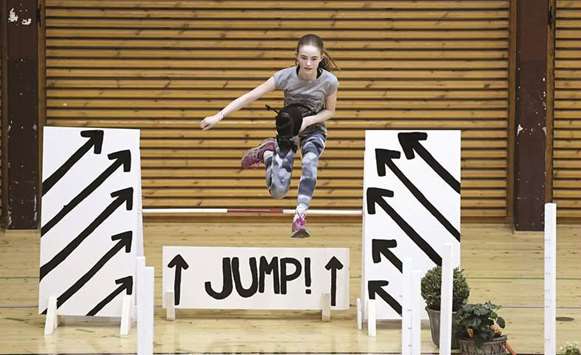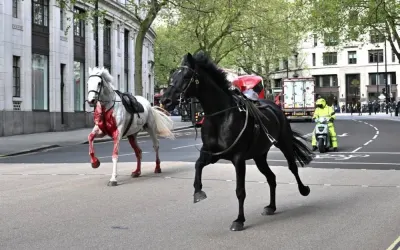Every seat at the local sports hall in the Finnish city of Vantaa, near Helsinki, is occupied. Nearly 1,000 people fill the stands, their eyes fixed intently on the central arena.
A show-jumping course for horse riders, complete with hurdles, has been erected in the centre. However, there is no neighing or whinnying to be heard. That’s because the horses in this competition are made of wood, cotton and fabric.
Their riders are fighting for the title of Finnish hobby-horsing champion, and it is not something that they are taking lightly.
Some 200 participants, with their horses clutched between their legs, will spring over hurdles and elegantly prance across the competition area during the contest.
Hobby-horsing is well on its way to becoming a true sports discipline in Finland. The SKY hobby-horsing association says it has nearly 10,000 active members, most of them girls between the ages of 10 and 18.
“We haven’t been recognised as athletes thus far, but we’re working on becoming more accepted,” says Venla Maria Uutela, president of the association.
Though the hobby horse has been seen as more than just a toy in Finland since the 1980s, this odd sport has only recently begun to garner attention.
“At first, most people made fun of those riding on their sticks,” says Venla Maria, who has written two books about her hobby-horsing. But instead of shying away from public attention, the enthusiasts have openly embraced it. Last year, 200 of them rode in a parade through Helsinki yelling: “Respect the hobby horse.”
“We wanted to be seen and to show that we’re proud of who we are and what we do,” says the 20-year-old.
Ada Filppa, a 16-year-old from the town of Naantali, certainly takes pride in the sport as reigning champion in the dressage category.
Ada trains four to five times a week in various places, including the woods, the street or the garden behind her house, where she’s built her own obstacle course.
“Hobby-horsing, for me, means freedom,” says Ada. “I can do what I want. No one can tell me what to do, there are no rules that I must hold myself to, and I don’t need any equipment.”
It’s also really good fun, she says. “When I’m having a bad day, I simply set out on my hobby horse, and then I’m happy again.”
Ada says it doesn’t bother her when people give her a strange look. “A lot of my friends also have hobby horses,” she says, and anyone who makes dumb comments probably isn’t her friend anyway.
The teenager also rides real horses – but that’s completely unrelated. “Hobby-horsing means a lot to me,” she says. “It’s simpler, and I’m also better at it.”
Uutela believes that one reason hobby-horsing has grown in popularity is that anyone with a little imagination can do it.
There are numerous videos on YouTube about how to make a hobby horse, and the components are easy to find: a broomstick, fabric, fur, wool, stuffing and decorations - which are obviously up to each creator.
Ada has seven, several of which she made herself. “I’m not especially proud of those,” she says with a laugh.
Hobby-horsing also has a fan in filmmaker Selma Vilhunen, whose documentary Hobbyhorse Revolution won two awards at a March film festival in the Finnish city of Tampere. The film is scheduled to be shown at festivals in the US and Switzerland later this year.
The documentary follows a group of girls who hobby-horse, while also touching on bigger themes, including friendship and solidarity.
Vilhunen recently told the Finnish radio station YLE that she admires hobby-horsing culture. “Everyone can be who she is,” says the director. “There’s a lot we can learn from these girls.” -DPA

A competitor at the national hobby-horsing championships in Finland.


